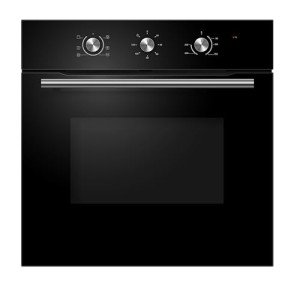The Rise of Built-In Cookers: A Comprehensive Guide
Recently, built-in cookers have actually acquired significant popularity amongst property owners and cooking enthusiasts alike. These appliances perfectly incorporate into kitchen designs, using a blend of functionality and looks. As development continues to evolve within the kitchen device sector, built-in cookers have actually transformed from mere benefits into vital tools for contemporary cooking. This short article looks into different elements of built-in cookers, including their types, benefits, installation considerations, and upkeep ideas.
What are Built-In Cookers?
Built-in cookers are kitchen appliances deliberately developed to be integrated into cabinetry or counter tops. Unlike freestanding built in oven and induction hob package that occupy standalone area, built-in cookers boost the kitchen's overall design by supplying a seamless appearance. They are typically part of a coordinated set that may include ovens, microwaves, and stovetops.
Kinds Of Built-In Cookers
Built-in cookers been available in different types, each catering to specific cooking designs and preferences. The following table describes common kinds of built-in cookers:
| Type | Description | Advantages |
|---|---|---|
| Built-In Ovens | Wall-mounted or integrated ovens that conserve flooring space. | Conserve space; easy access; aesthetic appeal. |
| Built-In Cooktops | Stovetop systems set up straight into the countertop. | Versatile style options; readily available in gas, electric, or induction. |
| Microwaves | Built-in microwaves incorporate into cabinetry for a structured look. | Saves countertop space; modern-day design. |
| Mix Ovens | Ovens that integrate traditional and microwave cooking features. | Adaptability; quicker cooking times. |
| Steam Ovens | Use steam for cooking, protecting nutrients and flavors. | Much healthier cooking; ideal for vegetables and fish. |
Benefits of Built-In Cookers
Buying built-in cookers provides many advantages that attract both performance and style. Below are a few of the crucial advantages:
1. Area Efficiency
Built-in cookers optimize readily available space, making them perfect for smaller sized cooking areas. They use a structured look without compromising cooking abilities.
2. Design Integration
These appliances mix perfectly into kitchen cabinets, improving the total visual. House owners have different design alternatives, enabling them to develop a cohesive kitchen appearance.
3. Improved Accessibility
Built-in ovens placed at eye level eliminate the need to flex down to examine food, making cooking a more available experience for everybody, consisting of those with movement difficulties.
4. Versatile Cooking Options
With various designs and functionalities, built-in cookers enable diverse cooking approaches. Home cooks can pick appliances that best suit their culinary preferences.
5. Increased Home Value
Elegant built-in cookers can enhance the home's total worth, particularly in competitive property markets. Buyers typically prefer well-equipped kitchens.
Installation Considerations
While built-in cookers use numerous benefits, their installation needs mindful preparation. Here are essential aspects to think about:
- Space Measurement: Before buying any built-in cooker, it's essential to determine the desired area properly. Appliances require to fit perfectly within existing cabinetry, leaving sufficient ventilation area.
- Electrical Power and Gas Supply: For built-in electrical cookers, ensure that sufficient electric wiring is offered. Gas cookers need appropriate gas line installation.
- Expert Installation: Due to their complexity, built-in cookers frequently require expert installation. Employing a professional guarantees security and correct operation.
- Upkeep Access: Consider how the cooker will be accessed for cleaning and maintenance. Accessibility needs to remain a top priority during installation.
- Compatibility with Other Appliances: Ensure that brand-new built-in cookers work with existing kitchen appliances for a cohesive style.
Upkeep Tips for Built-In Cookers
Keeping built-in cookers in top condition boosts their performance and durability. Here are some maintenance tips:
- Routine Cleaning: Regularly clean the oven and cooktop surface areas to prevent accumulation of grease and gunk. Make use of non-abrasive cleaners appropriate for the device material.
- Check Connections: Regularly inspect gas lines and electrical connections for safety. Right away deal with any signs of wear or damage.
- Replace Filters: Many built-in ovens and microwaves consist of filters that require replacement. Follow the maker's guidelines for changing these elements.
- Calibration: Over time, built-in ovens may require recalibration to make sure accurate temperature settings. Seek advice from the user handbook for guidelines on how to recalibrate.
- Expert Service: Schedule professional maintenance checks regularly to make sure that all parts operate optimally.
Built-in cookers represent a substantial advancement in kitchen design and functionality. Their smooth combination into cabinets not just enhances the aesthetic appeal of a kitchen but also enhances efficiency and use. By comprehending the numerous kinds of built-in cookers, their benefits, and factors to consider for installation and upkeep, homeowners can make informed choices that raise their cooking experience.
Frequently Asked Questions (FAQs)
1. Are built-in cookers more costly than freestanding models?
While built-in cookers might have a higher initial cost, they typically offer enhanced setup visual appeals and higher functionality, making them a worthwhile investment for many homeowners.
2. Can I set up a built-in cooker myself?
Though some house owners pick to set up built-in cookers themselves, it is frequently suggested to work with a professional due to the intricacies included, especially with gas lines and electric electrical wiring.
3. How do I pick the right built-in cooker for my kitchen?
Consider your cooking habits, kitchen style, and area restrictions when choosing built-in cookers. It's likewise necessary to assess the source of power and desired functionalities.
4. What is the life expectancy of a built-in cooker?
With appropriate maintenance, built-in cookers, especially ovens, can last numerous years-- often varying from 10 to 20 years, depending upon the brand and use.
5. Are built-in cookers energy-efficient?
Numerous modern built-in cookers feature energy-efficient innovations, such as convection cooking and smart functions, which can assist lower energy intake.
Built-in cookers provide an advanced option to contemporary cooking needs while improving the kitchen's overall esthetic. As cooking patterns continue to develop, these appliances will likely remain an integral part of kitchen styles for years to come.

